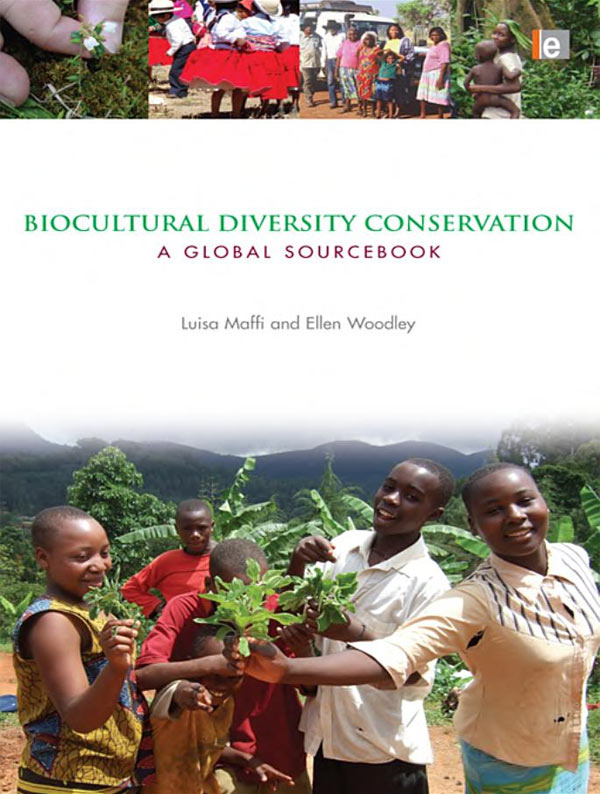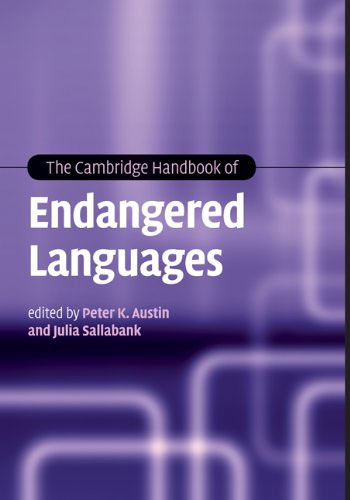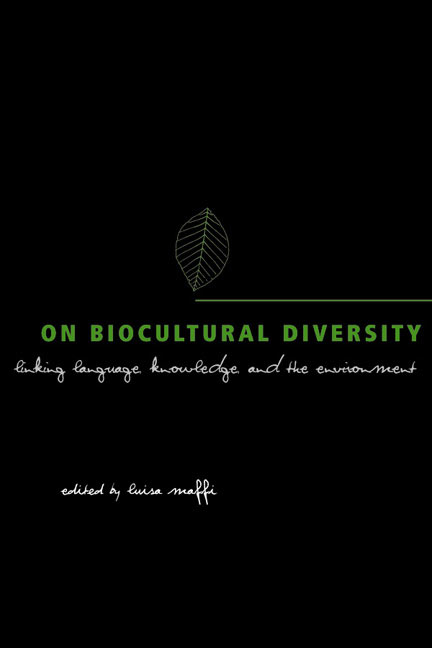Publications
Interesting Reads

Photo by Homero Nu?ez Chapa
We thought to use this space to list a few interesting publications on and around the topic of lingual diversity and mother language. These publications are not affiliated with us. We also offer further information on the subject available in the World Wide Web at »Links«.
Book References
· »Biocultural Diversity Conservation: A Global Sourcebook«
by Luisa Maffi, Ellen Woodley
· »The Cambridge Handbook of Endangered Languages«
by Peter K. Austin, Julia Sallabank
· »Sharing a World of Difference: The Earth's Linguistic, Cultural and Biological Diversity«
by Tove Skutnabb-Kangas, Luisa Maffi, David Harmon
· »On Biocultural Diversity: Linking Language, Knowledge, and the Environment«
by Luisa Maffi
Biocultural Diversity Conservation: A Global Sourcebook
by Luisa Maffi, Ellen Woodley
Routledge, Sep 10, 2012
|
»Biocultural Diversity Conservation: A Global Sourcebook« |
The field of biocultural diversity is emerging as a dynamic, integrative approach to understanding the links between nature and culture and the interrelationships between humans and the environment at scales from the global to the local. Its multifaceted contributions have ranged from theoretical elaborations, to mappings of the overlapping distributions of biological and cultural diversity, to the development of indicators as tools to measure, assess, and monitor the state and trends of biocultural diversity, to on-the-ground implementation in field projects. This book is a unique compendium and analysis of projects from all around the world that take an integrated biocultural approach to sustaining cultures and biodiversity. The 45 projects reviewed exemplify a new focus in conservation: this is based on the emerging realization that protecting and restoring biodiversity and maintaining and revitalizing cultural diversity and cultural vitality are intimately, indeed inextricably, interrelated. |
The Cambridge Handbook of Endangered Languages
by Peter K. Austin, Julia Sallabank
Cambridge University Press, Mar 24, 2011
|
»The Cambridge Handbook of Endangered Languages« |
It is generally agreed that about 7,000 languages are spoken across the world today and at least half may no longer be spoken by the end of this century. This state-of-the-art Handbook examines the reasons behind this dramatic loss of linguistic diversity, why it matters, and what can be done to document and support endangered languages. The volume is relevant not only to researchers in language endangerment, language shift and language death, but to anyone interested in the languages and cultures of the world. It is accessible both to specialists and non-specialists: researchers will find cutting-edge contributions from acknowledged experts in their fields, while students, activists and other interested readers will find a wealth of readable yet thorough and up-to-date information. |
Sharing a World of Difference: The Earth's Linguistic, Cultural and Biological Diversity
by Tove Skutnabb-Kangas, Luisa Maffi, David Harmon
UNESCO, Jan 1, 2003
|
»Sharing a World of Difference: The Earth's Linguistic, Cultural and Biological Diversity« |
We live in a world threatened by the loss of one of humanity's greatest treasures ? it's linguistic heritage. But few realize that bound up with the loss of language is loss of knowledge about our environment. This book documents the complex interrelationships between the Earth's linguistic, cultural and biological diversity. It offers a general introduction to a complex field and outlines some of the key challenges facing sustainable development from cultural and educational perspectives. "We need more than ever to find ways to share and maintain this world of diversity in which languages, cultures and environments are mutually supporting and sustainable." |
On Biocultural Diversity: Linking Language, Knowledge, and the Environment
by Luisa Maffi
Smithsonian Institution Press, 2001
|
»On Biocultural Diversity: Linking Language, Knowledge, and the Environment« |
Biodiversity loss is a well-known phenomenon. Over the next thirty years, according to most projections, 20 percent of the world's species may cease to exist. Less widely known, though attracting increasing attention, is the diversity loss that is affecting the world's languages and cultures. Up to 11 percent of an estimated 6,000 spoken languages in the world today are "nearly extinct", and as many as 90 percent of those languages may vanish during the course of this century. On Biocultural Diversity brings together an interdisciplinary group of scholars from the social and natural sciences as well as cultural advocates, human rights specialists, and indigenous experts to discuss the ways in which the losses of biological, linguistic, and cultural diversity are linked. Combining research with advocacy, this book outlines the threats to the world's diversity, explores the connections among its various forms, and recommends measures to help preserve and perpetuate the variety of life on Earth. Presenting case studies from Africa, Asia, Oceania, and the Americas, the contributors show how the loss of linguistic and cultural diversity ? often involving indigenous peoples' removal from their lands, suppression of their languages, and the loss of traditional environmental knowledge based on subsistence practices ? can affect biodiversity. The final chapters suggest new directions for research, documentation, training, and action in order to conserve biocultural diversity. This collection reveals a broad picture of why diversity matters. It offers a common foundation and practical avenues for preserving the wealth of biological life as well as the cultural riches represented byindigenous and minority languages and the knowledge they embody. |













